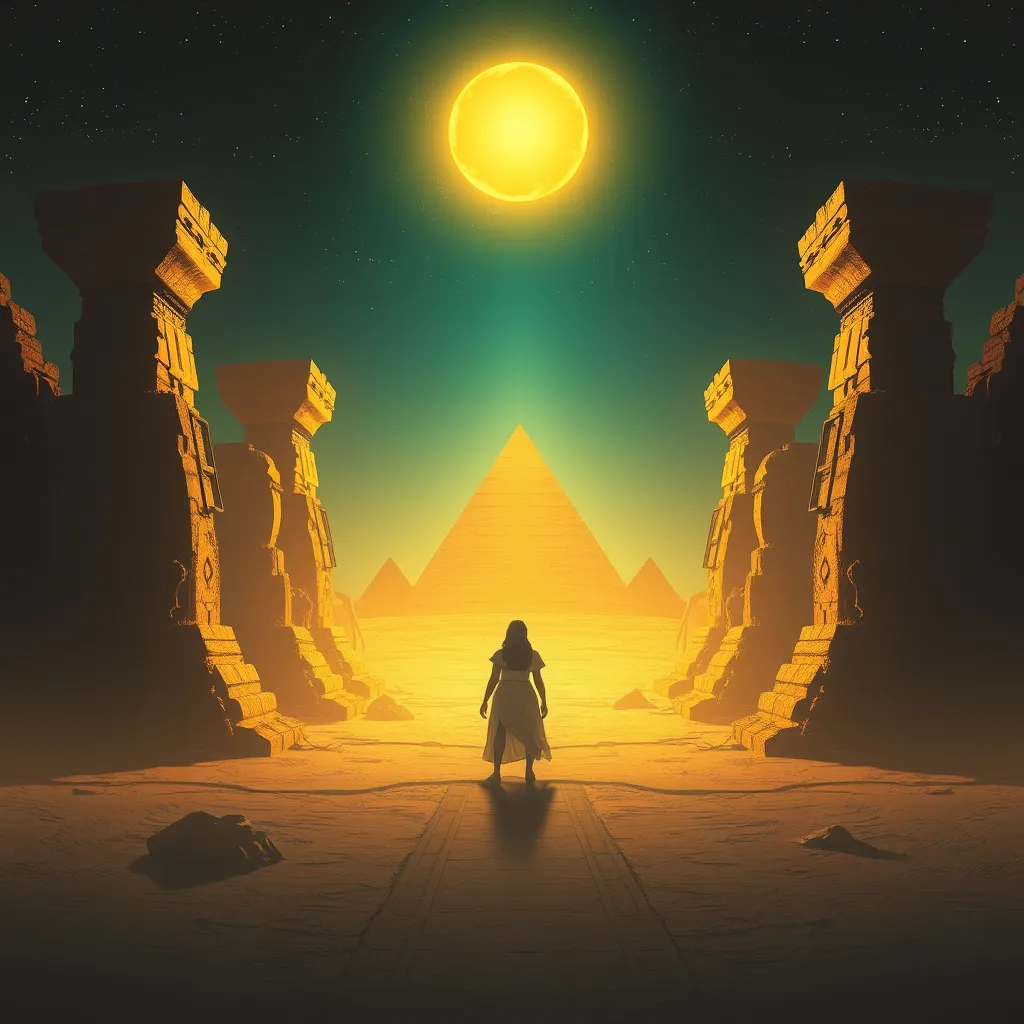The Duat: The Eternal Cycle of Life and Death
I. Introduction to the Duat
The Duat, often referred to as the realm of the dead, is a central concept in ancient Egyptian belief systems. It represents not just a place of afterlife but also a journey that every soul must undertake after death. The Duat is significant in that it embodies the ancient Egyptians’ understanding of life, death, and the continuation of existence beyond the mortal realm.
In Egyptian cosmology, life and death are not seen as opposing forces but rather as parts of an eternal cycle. The Duat serves as a bridge between the earthly life and the afterlife, emphasizing the importance of how one lives their life on earth, as it directly influences their journey through the Duat.
II. The Mythological Framework of the Duat
The mythology surrounding the Duat is rich and complex, featuring numerous deities that play vital roles in the afterlife journey. Among these, several key figures stand out:
- Osiris: The god of the afterlife, resurrection, and fertility, Osiris is perhaps the most significant deity in the Duat. He presides over the judgment of the dead, determining the fate of each soul.
- Anubis: The god of mummification and the afterlife, Anubis guides souls through the Duat and oversees the weighing of the heart ceremony.
- Isis: The protective goddess who aids in the resurrection of Osiris, she also plays a role in the protection of the deceased.
Osiris’s judgment is particularly significant. After death, the deceased’s heart is weighed against the feather of Ma’at, the symbol of truth and justice. This judgment determines whether the soul can enter the realm of the blessed or face annihilation.
III. The Geography of the Duat
The Duat is depicted in ancient texts and art as a vast, mysterious landscape filled with diverse realms and challenges. Each region of the Duat has its own symbolic meanings, which reflect different aspects of the afterlife journey:
- Fields of Iaru: A paradise where the souls of the righteous enjoy eternal life.
- The Lake of Fire: A place of punishment for those who fail the judgment, representing chaos and destruction.
- The House of the Dead: A transitional space where souls await judgment.
These regions are not merely geographical but also metaphysical, representing the moral and spiritual states of the souls navigating them.
IV. The Journey Through the Duat
For ancient Egyptians, the journey through the Duat begins immediately after death. The soul, often depicted as a bird with a human head, embarks on a perilous journey filled with trials and tribulations.
Some of the challenges faced by the deceased include:
- Confronting monstrous guardians who seek to prevent their passage.
- Crossing dangerous waters that symbolize the barriers between life and death.
- Overcoming illusions and tricks posed by demons that challenge their resolve and purity.
Successful navigation through these trials, aided by spells and knowledge from funerary texts, allows the soul to approach Osiris for judgment.
V. The Role of Spells and Texts
To assist souls in their journey through the Duat, ancient Egyptians created a variety of funerary texts, the most famous being the Book of the Dead. This collection of spells, prayers, and incantations served multiple purposes:
- Guiding the deceased through the Duat.
- Providing protection against malevolent forces.
- Ensuring successful judgment by offering divine knowledge and guidance.
The spells contained within these texts were often inscribed on tomb walls, papyrus scrolls, or even the funerary objects placed in burial chambers, reinforcing their protective and guiding roles in the afterlife.
VI. The Concept of Ma’at in the Duat
Ma’at, the principle of truth, balance, and cosmic order, is central to the understanding of the Duat. It represents the ideal state of existence that must be maintained for harmony in both the living world and the afterlife.
The relevance of Ma’at to the afterlife cannot be overstated. During the judgment, the heart of the deceased is weighed against the feather of Ma’at, symbolizing the individual’s adherence to truth and order throughout their life. This balance between order and chaos is crucial:
- If the heart is lighter than the feather, the soul is deemed worthy and can enter the paradise of the Fields of Iaru.
- If the heart is heavier, the soul faces eternal punishment, often depicted as being devoured by the demon Ammit.
VII. The Symbolism of Rebirth and Resurrection
The cyclical nature of life and death is a fundamental aspect of Egyptian philosophy, deeply embedded in the concept of the Duat. Death is not viewed as an end but as a transformation, akin to the daily cycle of the sun.
Rituals and practices surrounding death often symbolize rebirth, such as:
- The ritual of mummification, which preserves the body for the afterlife.
- Funeral rites that celebrate the life of the deceased while facilitating their passage to the Duat.
- Offerings made to the dead, ensuring they have the necessary provisions for their journey.
VIII. Conclusion: The Duat’s Legacy in Modern Context
The Duat continues to influence contemporary understanding of life and death. Its rich symbolism and complex mythology resonate with modern themes of spirituality and the quest for meaning in the face of mortality.
Furthermore, the enduring fascination with Egyptian mythology highlights the importance of the lessons imparted by the Duat. It encourages reflection on how we live our lives and the legacy we leave behind, emphasizing that the journey does not end with death but transforms into a new existence.




